Chevrolet Equinox Service Manual: Cooling System Draining and Filling (GE 47716) Engine Cooling
Special ToolsJ 26568Coolant and Battery Fluid TesterJ 42401Radiator Cap and Surge Tank Test AdapterGE-47716Vac N Fill Coolant Refill ToolDraining Procedure
Warning:With a pressurized cooling system, the coolant temperature inthe radiator can be considerably higher than the boiling point ofthe solution at atmospheric pressure. Removal of the surge tankcap, while the cooling system is hot and under high pressure,causes the solution to boil instantaneously with explosive force.This will cause the solution to spew out over the engine, thefenders, and the person removing the cap. Serious bodily injury mayresult.
Remove the coolant pressure cap.Raise and support the vehicle. Refer toLifting and Jacking the Vehicle.Place a drain pan under the drain cock.Remove the radiator drain cock.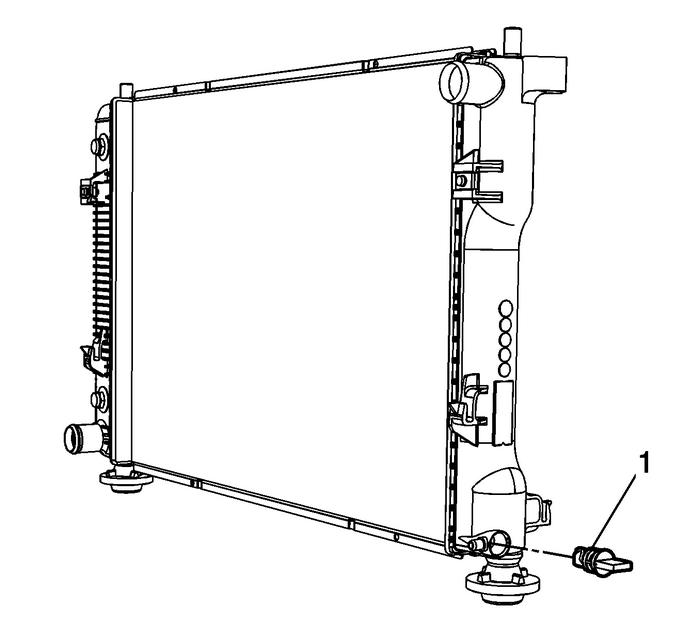
Drain the cooling system.Lower the vehicle.Inspect the coolant.Follow the appropriate procedure based on the condition ofthe coolant.Normal in appearance—Follow the fillingprocedure.Discolored—Follow the flush procedure. Refer toFlushing.Vac-N-Fill ProcedureInstall theJ 42401Radiator Cap and Surge Tank Test Adapteronto the coolant surge tank.
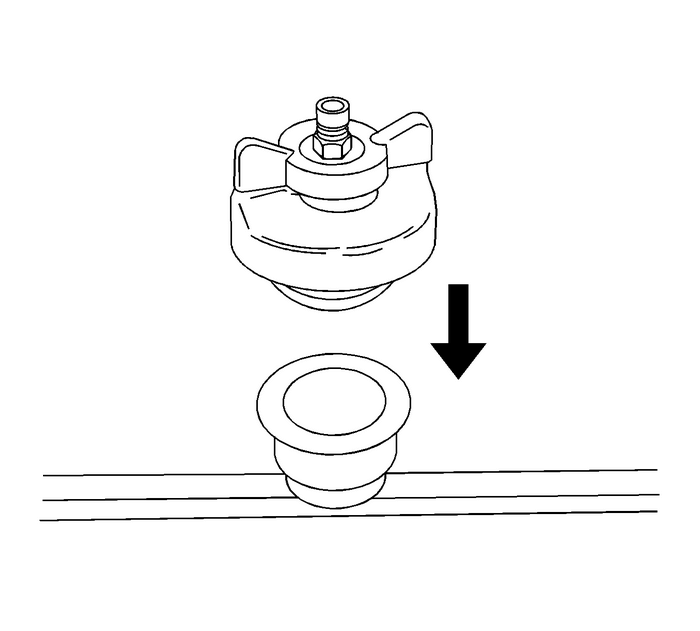
Warning:To avoid being burned, do not remove the radiator cap orsurge tank cap while the engine is hot. The cooling system willrelease scalding fluid and steam under pressure if radiator cap orsurge tank cap is removed while the engine and radiator are stillhot.
Attach the Vac N Fill cap to theJ 42401Radiator Cap and Surge Tank Test Adapter.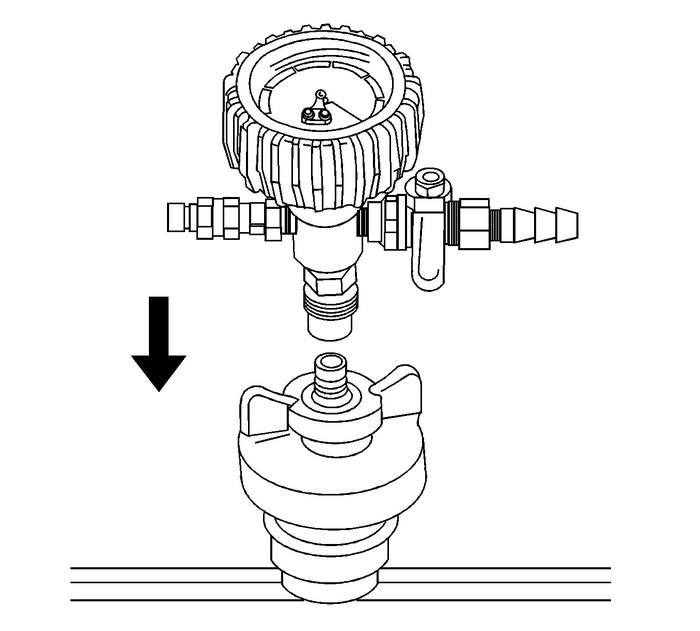
Attach the vacuum gauge assembly to the Vac N Fillcap.
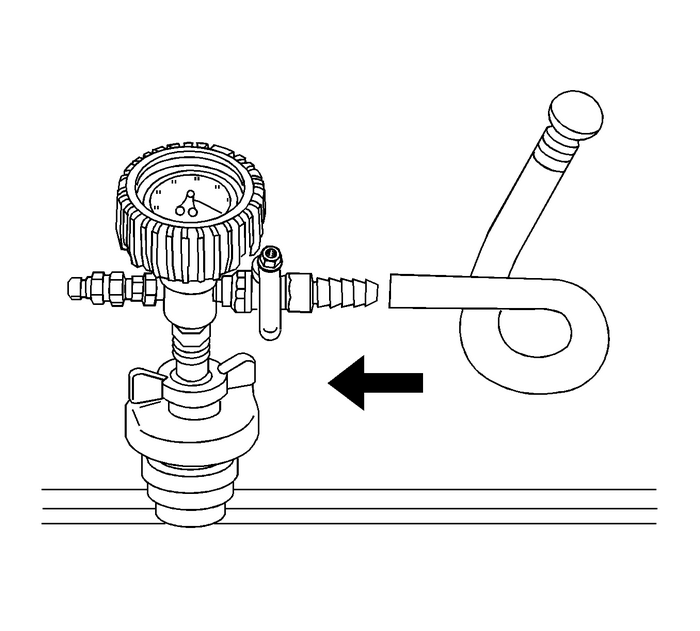
Attach the fill hose to the barb fitting on the vacuum gaugeassembly.
Ensure that the valve is closed.
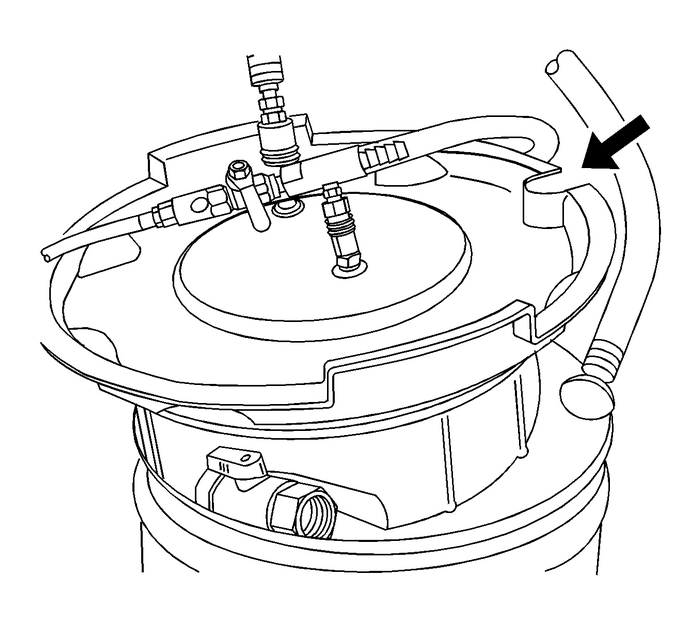
Note:Use a 50/50 mixture of DEX-COOL antifreeze and clean,drinkable water.
Always use more coolant than necessary. This will eliminateair from being drawn into the cooling system.
Pour the coolant mixture into the graduated reservoir.Place the fill hose in the graduated reservoir.Note:Prior to installing the vacuum tank onto the graduatedreservoir, ensure that the drain valve located on the bottom of thetank is closed.
Install the vacuum tank on the graduated reservoir with thefill hose routed through the cut-out area in the vacuumtank.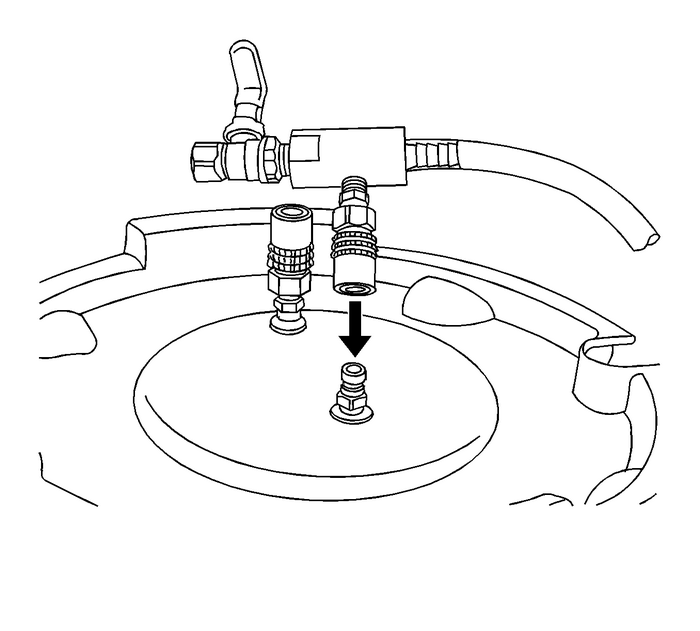
Attach the venturi assembly to the vacuum tank.
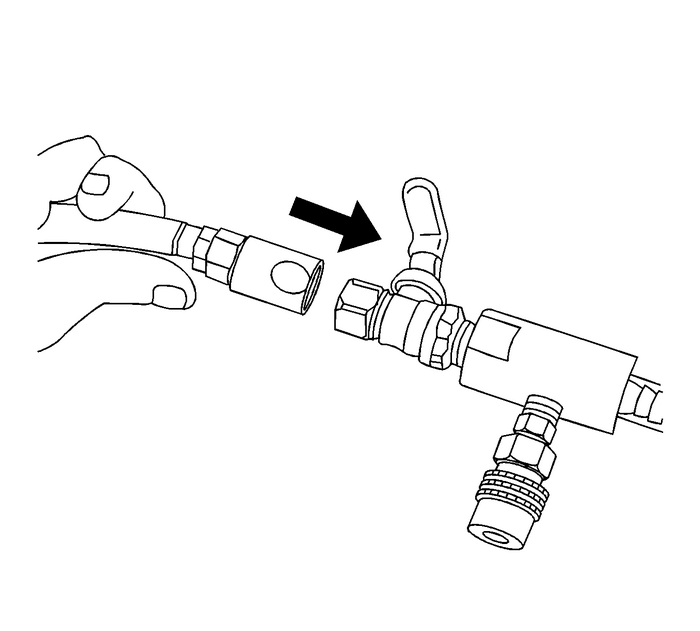
Attach a shop air hose to the venturi assembly.
Ensure the valve on the venturi assembly is closed.
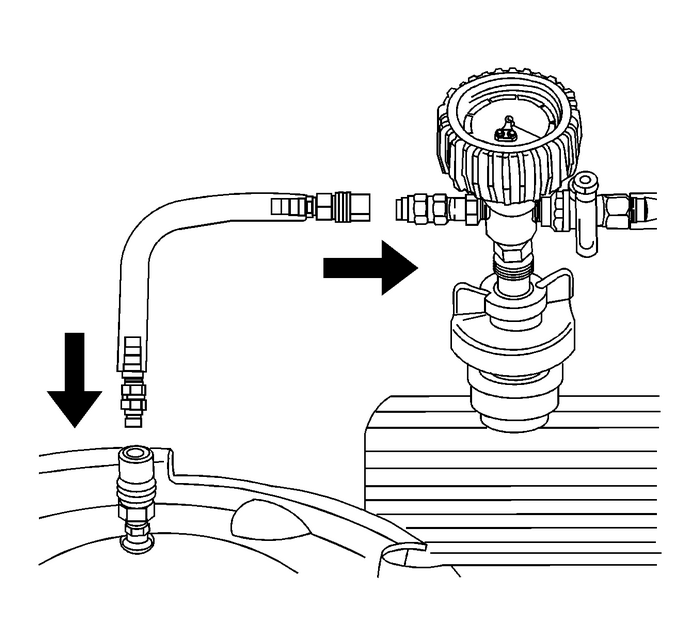
Attach the vacuum hose to the vacuum gauge assembly and thevacuum tank.
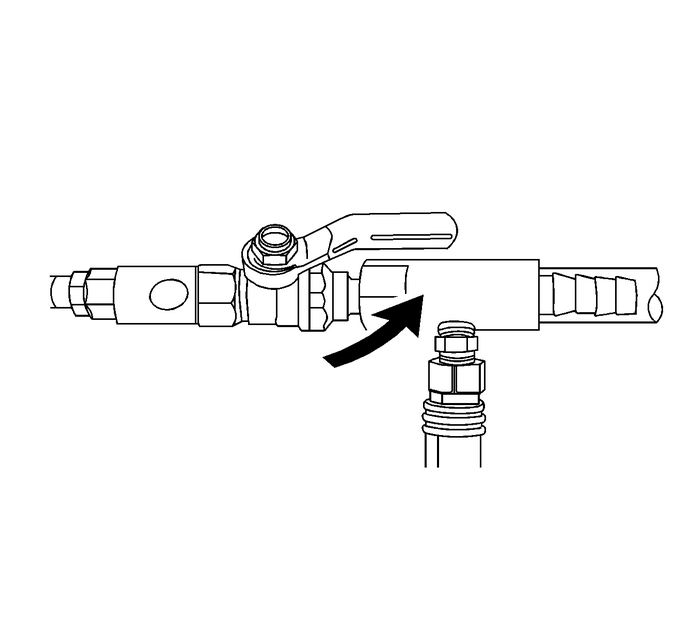
Open the valve on the venturi assembly. The vacuum gauge willbegin to rise and a hissing noise will be present.
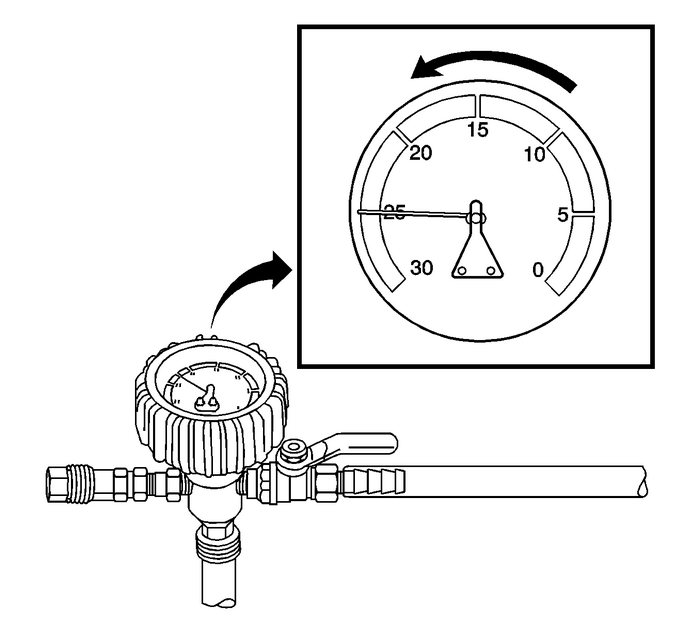
Continue to draw vacuum until the needle stops rising. Thisshould be 610–660 mm-Hg (24–26in-Hg).
Cooling hoses may start to collapse. This is normal due tovacuum draw.
To aid in the fill process, position the graduated reservoirabove the coolant fill port.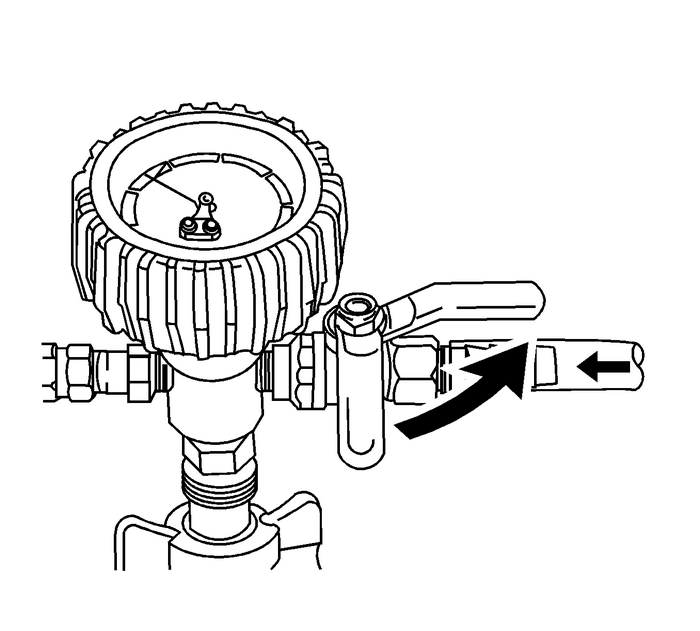
Slowly open the valve on the vacuum gauge assembly. When thecoolant reaches the top of the fill hose, close the valve. Thiswill eliminate air from the fill hose.Close the valve on the venturi assembly.If there is a suspected leak in the cooling system, allow thesystem to stabilize under vacuum and monitor for vacuumloss.
If vacuum loss is observed, refer toLoss of Coolant.
Open the valve on the vacuum gauge assembly. The vacuum gaugewill drop as coolant is drawn into the system.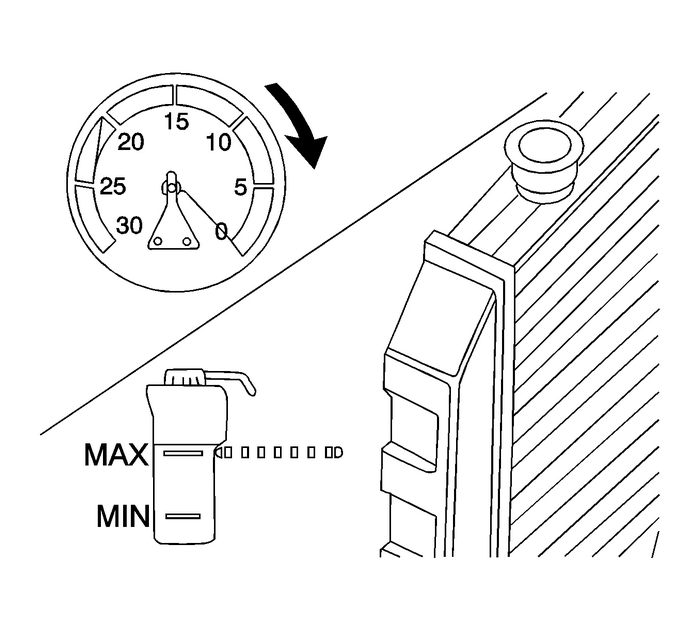
Once the vacuum gauge reaches zero, close the valve on thevacuum gauge assembly and repeat steps 11–17.Detach the Vac N Fill cap from theJ 42401Radiator Cap and Surge Tank Test Adapter.Remove theJ 42401Radiator Cap and Surge Tank Test Adapterfrom the coolant surge tank.Add coolant to the system as necessary.Inspect the concentration of the coolant mixture usingJ 26568Coolant and Battery Fluid Tester.
Note:After filling the cooling system, the extraction hose can beused to remove excess coolant to achieve the proper coolantlevel.
Detach the vacuum hose from the vacuum gauge assembly.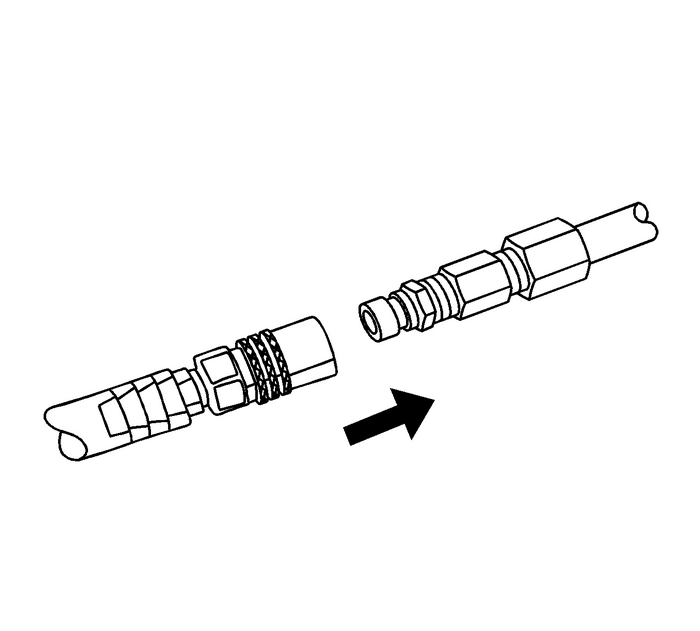
Attach the extraction hose to the vacuum hose.
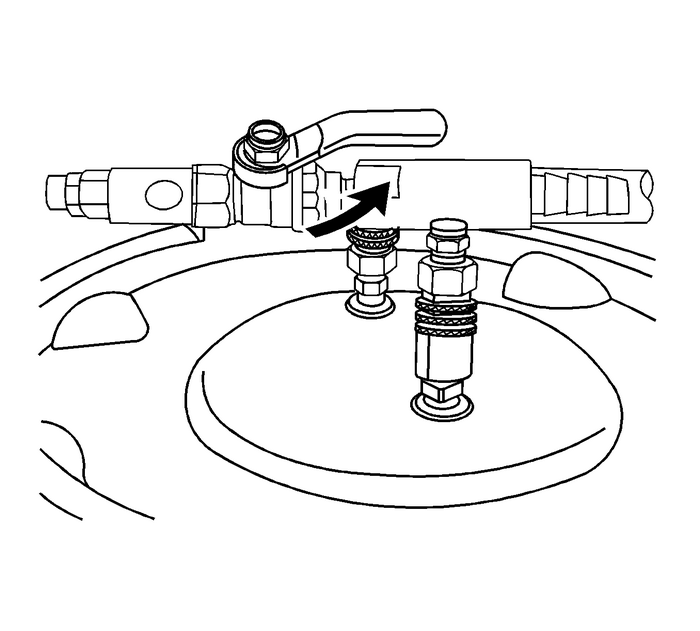
Open the valve on the venturi assembly to start a vacuumdraw.
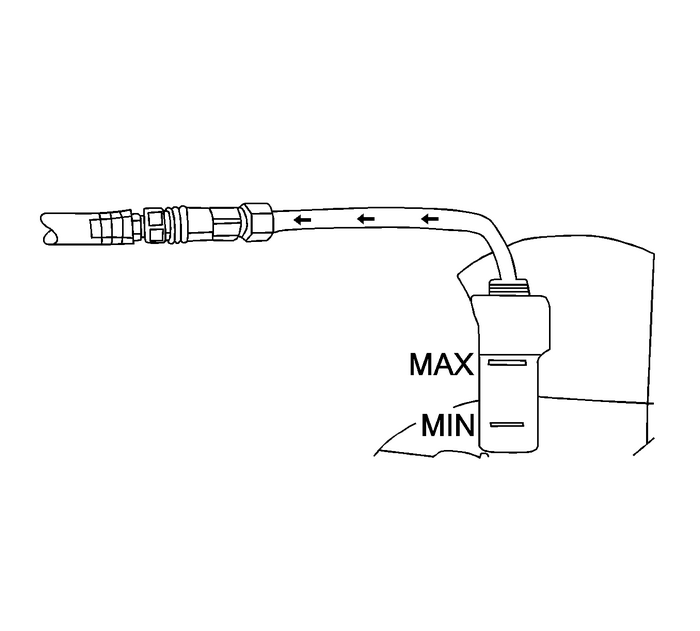
Use the extraction hose to draw out coolant to the properlevel.The vacuum tank has a drain valve on the bottom of the tank.Open the valve to drain coolant from the vacuum tank into asuitable container for disposal.Install the surge tank cap.
 Cooling System Draining and Filling (LEA) Engine Cooling
Cooling System Draining and Filling (LEA) Engine Cooling
Special ToolsJ 26568Coolant and Battery Fluid TesterDraining ProcedureWarning:To avoid being burned, do not remove the radiator cap orsurge tank cap while the engine is hot. The cooling system willrel ...
 Engine Support Fixture Engine Block Engine Mounts
Engine Support Fixture Engine Block Engine Mounts
Special ToolsJ-28467-B Universal Engine Support FixtureJ-28467-501 Engine Support Fixture AdaptersJ-36857 Engine Lift BracketFor equivalent regional tools, refer toSpecial Tools.Installation Procedure ...
Other materials:
Spark Plug Replacement Engine Control
Removal ProcedureCaution:This engine has aluminum cylinder heads. Do not remove thespark plugs from a hot engine, allow it to cool first. Removing thespark plugs from a hot engine may cause spark plug thread damage orcylinder head damage.Remove the ignition coil(s). Refer toIgnition Coil Replacement ...
